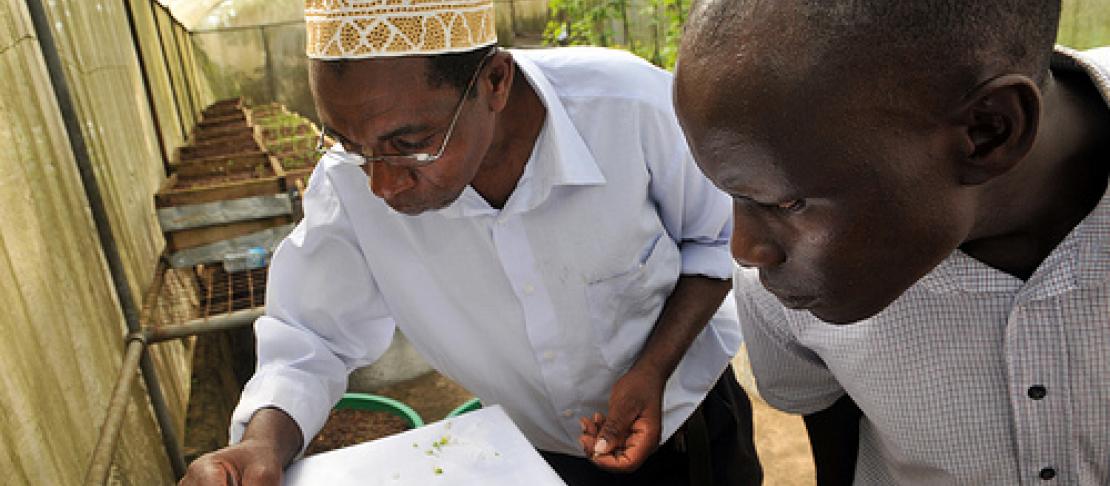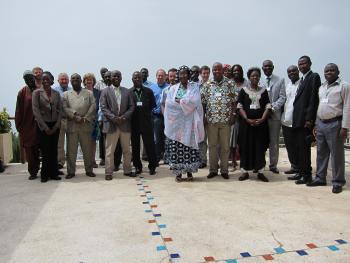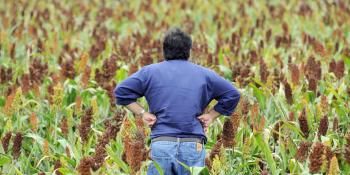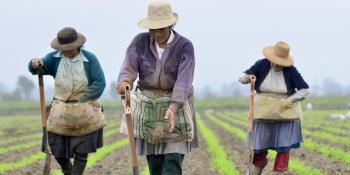Planning ahead for food security, environments and livelihoods in West Africa

What if governments in West Africa take a long-term perspective and play an active role in the development of climate-smart agriculture on a large scale - but also want to invest in women’s education, infrastructure, health care, the environment and other sectors? What are the socio-economic and political implications that would come up for such a broad push for development? What if catastrophe – such as a destructive crop disease - hits before governments have had the time to develop the capacity needed to adapt and respond to such crises?
Conversely – what about a world where states are not proactive but where non-state actors (the private sector, NGOs, civil society) drive change, for better or for worse? What would be the limits and challenges in that case? What would be the consequences for agricultural development- such as changes to crop yields, changes in livestock production systems and agricultural land expansion- in any of these scenarios? How would these different worlds respond to the increasing pressures of climate change?
Why develop scenarios?
In mid-May the CGIAR Research Program on Climate Change, Agriculture and Food Security (CCAFS) organized its final regional scenarios development workshop for West Africa in Dakar, Senegal. This third and final workshop followed the previous two organized workshops, first workshop on scenarios was held in 2010 and second one last year in Dakar in November (PDF). The goal of creating these scenarios – alternate, plausible narratives about the future - is to outline possible futures based on key socio-economic uncertainties which will be used by policy makers, researchers and actors in other sectors at the regional and local level to test and develop their strategies and recommendations as well as setting policies and agendas.
The four scenarios created during the second workshop were translated to a number of drivers that were used in two global agricultural economic models – IMPACT, developed by the International Food and Policy Research Institute (IFPRI) and GLOBIOM, developed by the International Institute for Applied Systems Analysis (IIASA). The combination of both qualitative explorations of the future through storylines and quantitative modelling have a number of advantages:
- The models offer a way to test the consistency of different assumptions made about the future by regional stakeholders;
- The stories offer complexity and contextual richness that the models cannot provide – they help explain the why of the model results;
- The models provide concrete numbers (e.g. prices for food products, yields, change of different agricultural land types under different scenarios) for policy makers, making the scenarios more useful for decision making;
- The stories challenge and ask relevant questions of the models, prompting new ways in which to consider using the models.
During the workshop, the participants quantified a number of drivers of change for each of the scenarios in the short term (up to 2020) and medium term (up to 2030). Examples of such drivers are changes in women’s literacy rate, rates of urbanization, changes in infrastructure, crop yields, arable land, agricultural production costs and changes in livestock production systems.
(up to 2030). Examples of such drivers are changes in women’s literacy rate, rates of urbanization, changes in infrastructure, crop yields, arable land, agricultural production costs and changes in livestock production systems.
Guiding strategic planning for the future
Once the West African scenarios are finished, they will be used over 2012 and 2013 to guide policy makers, the private sector, civil society and researchers in the region in their planning and agenda setting. CCAFS will facilitate these strategic planning processes – building on activities in the CCAFS East Africa scenarios process (PDF), the use of the scenarios has become a main focus for the CCAFS scenarios team. The use of the scenarios is where the proverbial rubber meets the road and where strategic futures work can really make an impact to help regional stakeholders act more strategically in the face of uncertainty. The same goes for using scenarios in local community contexts and for their use in research.
Additionally, scenarios in themselves can also be used as a tool for engagement, education and information using widely accessible media – and to this end CCAFS works together with the PANOS development journalism network to have the scenarios featured in West African newspapers, TV items, radio programs and more.
To find out more about the CCAFS scenarios read the blog post “CCAFS scenarios engage regions to plan for uncertain futures”. You can also read more on our scenarios page.
This blog post was written by Joost Vervoort, Science Officer for the Scenarios activity, based at the Environmental Change Institute, Oxford University and Abdoulaye Saley Moussa, Science Officer West Africa, based in Mali, West Africa.



